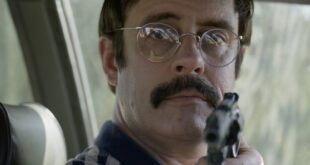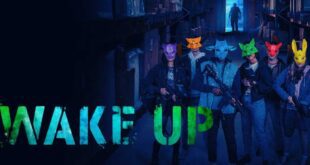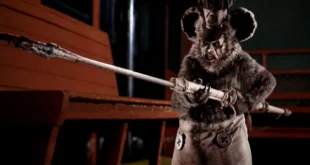A few years ago, we reviewed the novella, Hell Cat Of The Holt (2017 – our review), by horror author Mark Cassell (our interview), and we were big fans. Now, we’re back with another release from the author called Parasite Crop. How does this one compare?
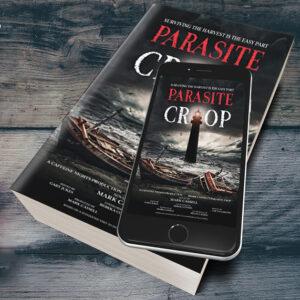
Mark Cassell’s Parasite Crop is a slow-burning tale of horror, reminiscent of the old-school horror books I loved as a kid. It’s one part creature feature, one part town with a dark secret. It takes place in a town called Dungeness, along the Southeast coast of England. The story starts with a character named Sydney, an immortal boy who drowned 150 years ago. He uses a wheelchair and has a misanthropic view of the world. A man named Marshall cares for him.
Next, we meet a couple, Jo and her partner, Cane. Jo’s father recently passed away, and they are moving to Dungeness in search of a new beginning. Jo hopes to reconnect with her Grandpa, Tommy, who has lived there his entire life. When they arrive, a blue van tailgates them, almost causing them to get into an accident. Later, Cane goes for a run and sees the same van. The driver appears to be loading a dead body inside. From here, the stories of Sydney, Marshall, Jo, Cane, and Tommy intertwine, unveiling a stream of horrors Jo and Cane must now face.
The characters in this book sucked me in right away. They were all three-dimensional, and I found myself wanting to know more about them. How is Sydney still alive? What secrets are Tommy keeping? Who is Marshall? The tension builds as each one of these questions are answered.
I also enjoyed the descriptions of Dungeness itself. It was the perfect setting for this story, and the author described it in a way where I could almost smell the saltwater as it splashed along the shore.
Overall, Parasite Crop is a fun book, and I would highly recommend it to all the horror fans out there.
I also had a chance to ask Mark a few questions about his book:
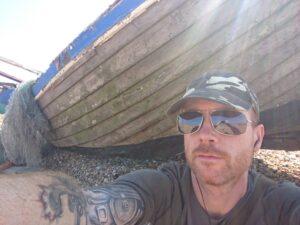
PopHorror: Dungeness almost feels like a character in the book. Do you have any experiences there that influenced this story?
Mark Cassell: The first significant Dungeness experience was the lighthouse visit with my wife, perhaps a year before the Covid pandemic swept across the globe. From the very top, with our backs to the great brass housing of an immense lightbulb, we were allowed a panoramic view of a desolate expanse of coastline.
The power station huddled on one side, with around two dozen homesteads dotted across the estate on the other. Beyond these was a flat landscape cut in two by electricity pylons, while the rest of the view was of the beach and the English Channel’s curved horizon. Oddly, it wasn’t so much the rusted machinery and boat wrecks scattered across the beach to inspire me, nor was it how sporadic and unkempt the homesteads were; it was in fact, the unshakeable knowledge that countless shipwrecks lay at the bottom of the sea.
Humbled, I later thought of the survivors and the trauma they no doubt endured. I soon considered a single survivor, perhaps from a 19th-century ship. What if they were a child? What if he was still alive today? And what if he had not aged?
Though Parasite Crop developed before the Covid pandemic hit, the collected isolation to strangle us as a nation (indeed, us as a species) took me to Dungeness time and time again. While the virus raged across the world, I constantly found myself in the shade of what had become my favourite spot.
There on the pebbles, my back against a wrecked fishing trawler, Parasite Crop,took shape.
PopHorror: Are there any writers or books that have been a big influence on you?
Mark Cassell: I will always name the book I nabbed from my dad’s shelf way back when I was a teenager: James Herbert’s The Magic Cottage. That novel pulled me into the horror genre, and although I now enjoy fantasy and science fiction, it is there where my roots first took hold.
PopHorror: What do you want readers or potential readers to know about this book?
Mark Cassell: Parasite Crop is the story of twelve-year-old Sydney and his crop. Although those two elements are fiction, Dungeness remains precisely how it’s described in the novel, even down to its history. Research took me deep into the Second World War, and also that of an actual package ship named the Josephine Willis which sank in 1856.
 PopHorror Let's Get Scared
PopHorror Let's Get Scared

